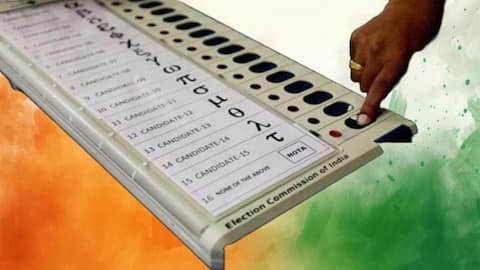Harnessing technology to enhance voting accessibility in India
What's the story
In India, a country renowned for its vibrant democracy, ensuring inclusive and accessible voting mechanisms is imperative. However, despite significant progress, challenges such as geographical barriers, limited infrastructure, and socio-economic disparities continue to hinder equal participation in elections. Let us understand how leveraging technology presents a promising solution to address these hurdles and foster greater voter accessibility across the nation.
Online registration
Digital voter registration
The Election Commission of India provides online voter registration for Indian citizens who turn 18 on the qualifying dates (January 1st, April 1st, July 1st, and October 1st of the year during the revision of the electoral roll). Citizens can enroll by filling out Form 6 online via the National Voters' Service Portal. Additionally, registered voters are encouraged to verify their enrollment status regularly.
Postal ballots
Remote voting solutions
In India's vast and diverse landscape, accessing polling stations poses challenges for population segments like the elderly, differently-abled, and remote residents. Remote voting solutions like postal ballots and internet voting help overcoming these barriers. Migrants lack voting rights and often face disenfranchisement. The Election Commission of India (ECI) proposed the Remote EVM (R-EVM) to enable voting for domestic migrants, currently in pilot phase.
Voter ID
Digital voter ID cards
In January 2021, the Election Commission introduced digital voter ID cards, a significant step towards digitizing electoral processes in India. These e-voter cards aim to streamline the voter identification process by eliminating the necessity for obtaining a new physical card whenever there is a change in address or other personal details. As digital counterparts, they're downloadable in a non-editable PDF format.
Predictive analytics
AI in enhancing campaigns and predicting outcomes
Political entities now leverage Artificial Intelligence algorithms to process extensive voter data, demographics, social media engagements, and voting histories. This analysis informs customized campaign messaging, enabling targeted outreach to specific voter segments. Additionally, predictive analytics, driven by AI, offer insights into election trends by evaluating polling data, and sentiment analysis from social platforms. This enhances strategic decision-making and forecasting election outcomes with greater precision.
Knowledge
Voter education and awareness
While technology plays a pivotal role in enhancing voting accessibility, efforts to educate and raise awareness among citizens are equally vital. Comprehensive voter education campaigns utilizing digital platforms, social media, and mobile applications can disseminate information on voter registration, electoral procedures, and the importance of participation. Empowering voters with technology-enabled initiatives can promote informed decision-making and foster a culture of civic engagement.
